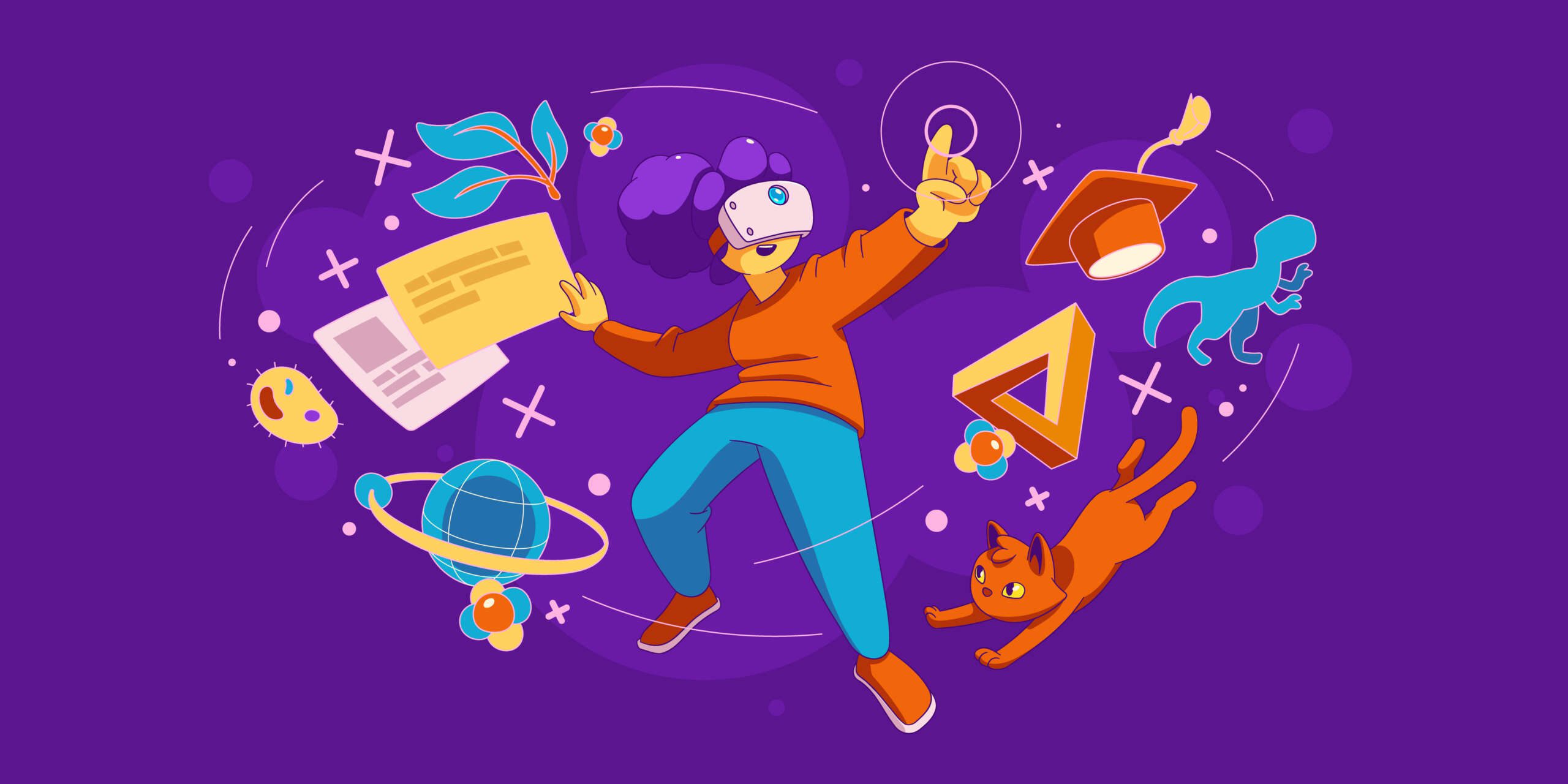Simulations and educational games in teaching
Simulations and educational games are potent tools in higher education teaching and can be used to create experimental learning environments. They allow students to try out and learn complex concepts and skills through interactive experiences in a safe environment.

Simulations and educational games with practice-oriented knowledge and professionally relevant contexts of action enable students to test the applicability of acquired competencies in their studies. In higher education, simulations and educational games are increasingly used in teaching-learning scenarios and offer many benefits to both teachers and learners – if used correctly.
In a nutshell: What are simulations and educational games?
A simulation is a recreation of a real or hypothetical situation that allows students to slip into a particular role or scenario and observe the effects of their own decisions on the model. An educational game is a game that is specifically designed to teach certain skills or knowledge. Educational games can be designed as quizzes, puzzles, or adventure games and often provide feedback and stimuli as part of the playful actions to prompt student learning processes.
Simulations and educational games can address topics or problems of various disciplines (e.g., business, engineering, or social science) and simulate the experiences and challenges of realistic work environments. They can be categorized in many ways and subdivided according to certain characteristics, such as genre, single or multiplayer, or user interface.
Step by Step
Before a simulation or educational game can be implemented, the teaching content must be conceptualized and the required technology must be provided. At this point, objectives, especially the Learning Outcomes to be achieved with the simulation or educational game, should be defined and the necessary resources should be provided. You can choose to use existing simulations or develop your own. This decision is influenced by various factors:
- Availability and customizability: The availability of simulations and educational games that precisely match needs and learning objectives can be limited. If existing simulations and educational games do not fit or can be adapted properly, developing your own simulations and educational games may be a better option.
- Cost: Existing simulations and educational games are often less expensive than developing your own.
- Time: Developing your own simulations and educational games can be very time-consuming while existing simulations and educational games can usually be used immediately.
During the simulation or educational game, students are supposed to actively apply their acquired knowledge. Before implementation, consider the following issues that will have a strong impact on the implementation and achievement of established objectives and communicate them to the students:
- Integration into the lessons (thematically, temporally, spatially)
- Supervision
- Group work
- Provision of contextual knowledge about game content and tasks
- Assignments
- Follow-up and reflection
After completing the simulation or educational game, the results should be evaluated and discussed. At this point, it may also be useful for students to give their feedback on the simulation or educational game.
Advantages and disadvantages of simulations and educational games
It is important to consider the intended objectives and required resources when incorporating simulations and educational games into teaching to determine if they are appropriate for a particular teaching-learning setting.
- Facilitate a deeper understanding of complex issues and dynamic developments
- Achieve greater focus on learners with a more active role
- Promote the application of acquired knowledge
- Provide a safe environment for experiments and errors
- Enable a personalized and adaptive learning environment
- Can increase student motivation since they are interactive, fun, and allow students to put their knowledge into a practical context
- High effort in preparation and implementation
- Require special technical equipment
- Equipment, licenses, or development of a new software can cause high costs
- Require regular evaluation and adaptation to ensure their effectiveness and relevance
Good Practices
- Bartnik – Pearson Mylab Erfahrungsbericht (German)
- Bartnik – Anylogistix Erfahrungsbericht (German)
- Linde – TopSim Erfahrungsbericht (German)
- Lindner – AnyLogic Erfahrungsbericht (German)
- Guardiola – Experience sharing about funding impact games and simulators (English)
Any questions?
Feel free to contact us by mail to lehrpfade@th-koeln.de!
Header-Image: © klyaksun/stock.adobe.com
-

M. A., research assistant at the Center for Academic Development at TH Köln. Responsible for the area of e-assessment. Member of the network Gesellschaft für Medienpädagogik und Kommunikationskultur (GMK). Main areas of work: Coordination, conception, consulting and training in the context of e-examinations, examination didactics and related platforms (ILIAS, EvaExam), coordination of the expert group on simulations and learning games in teaching.



